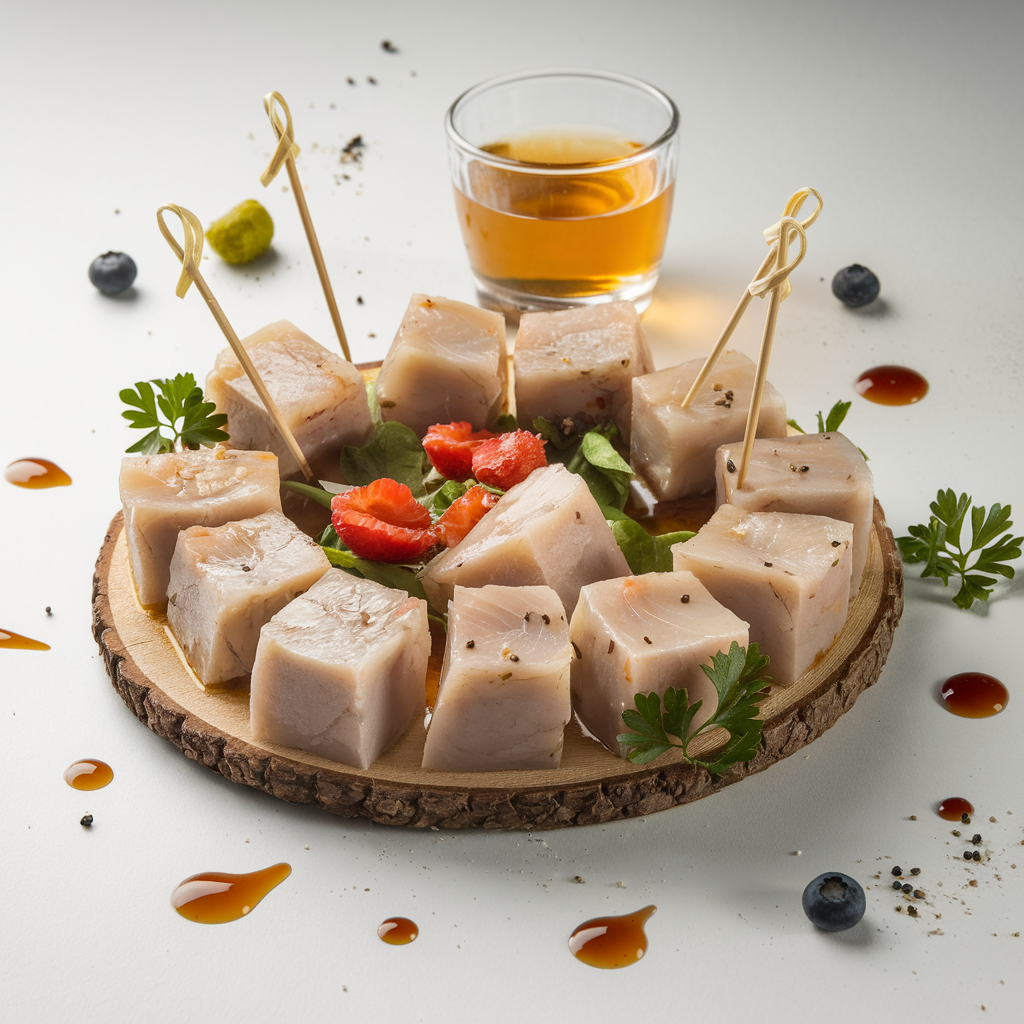Iceland
Hákarl

This image was generated using AI
- 1 kg Greenland shark (or similar fermented shark)
- Water (for soaking the shark)
- Salt (optional, for seasoning)
- Prepare the shark: If using fresh Greenland shark, you must first clean and prepare the meat. The shark must be properly fermented before consumption. The traditional method involves burying the shark in a shallow pit to ferment for several months (typically 2-3 months). During this process, the shark decomposes and releases toxins that are neutralized by the fermentation. This is why fresh shark is not safe to eat without fermentation.
- If using commercially available fermented shark (which is more common outside of Iceland), skip this fermentation step.
- Cut the shark: After the fermentation period, the shark is cut into small pieces, usually in cubes of around 2-3 cm.
- Optional rinsing: Depending on the level of fermentation, some people prefer to rinse the shark briefly under cold water to reduce its strong ammonia odor.
- Serve: Serve Hákarl as part of a traditional Icelandic dish, usually accompanied by a small shot of Brennivín (Icelandic schnapps) to help balance the strong taste. The dish is often eaten in small, bite-sized pieces due to its pungent flavor.
Hákarl is one of Iceland's most infamous and unique dishes, made from the Greenland shark, a fish that is toxic if consumed fresh due to its high levels of urea. The fermentation process makes it safe to eat, although it produces a strong ammonia smell and a bold flavor that many find challenging. Despite its strong taste, Hákarl is a traditional delicacy that has been enjoyed in Iceland for centuries, often as part of a feast during the Þorrablót (the mid-winter festival). It's often paired with Brennivín, a strong local liquor, to help mask the intense flavor!